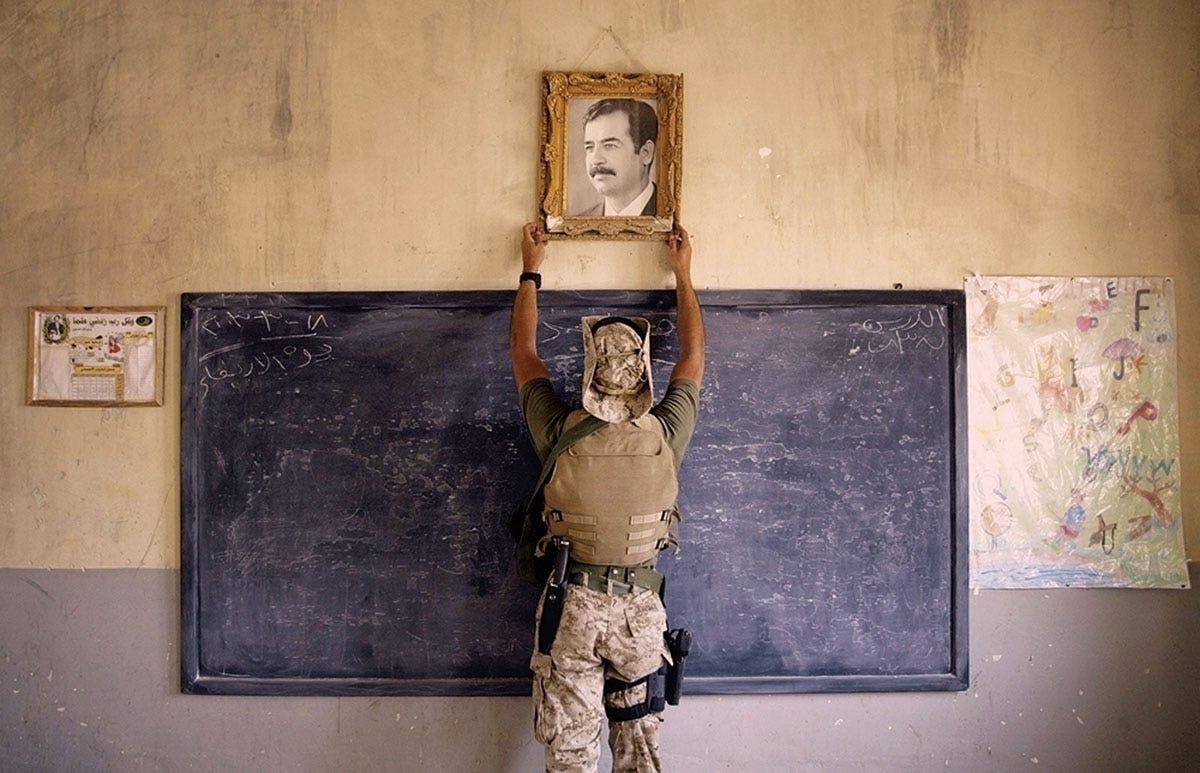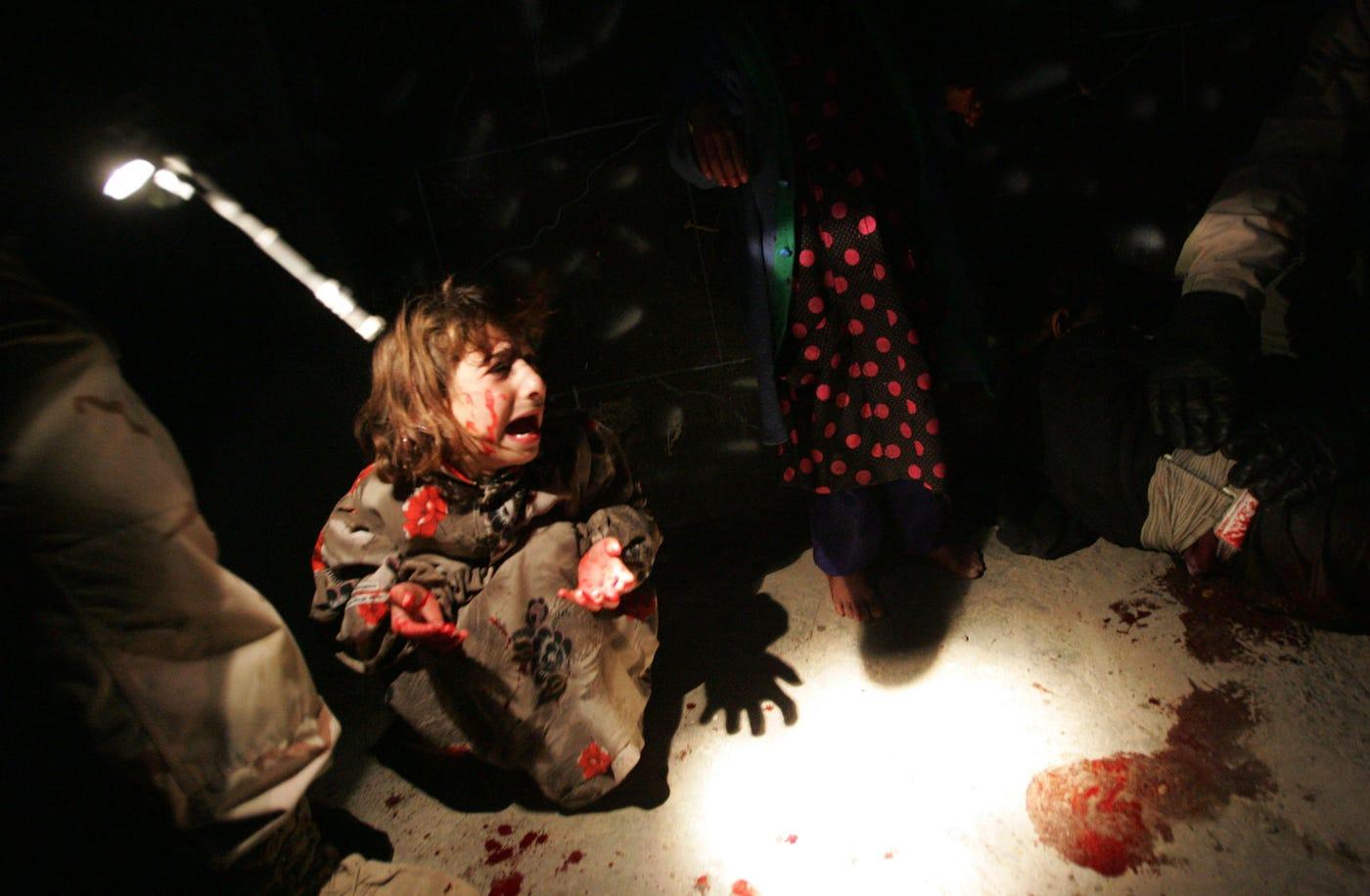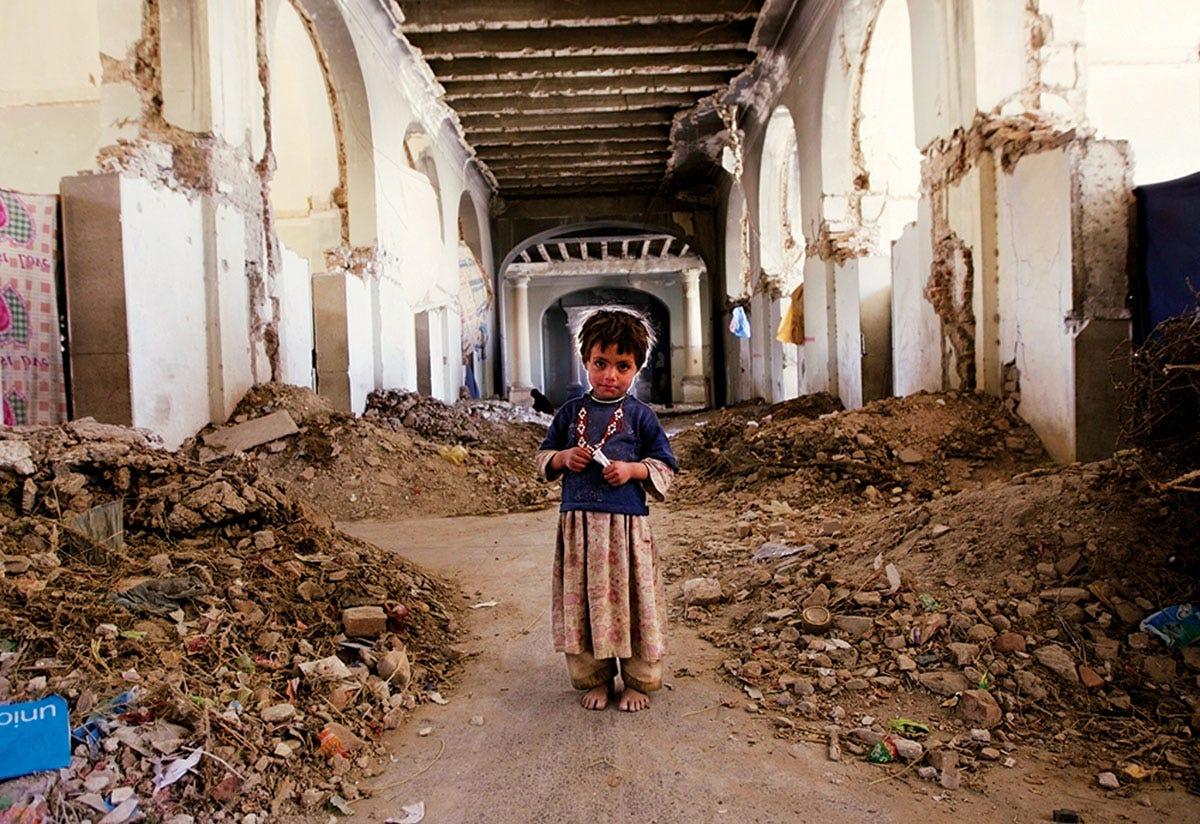Introduction
Chris Hondros is one of the most famous US-based photographers who dwelled on the military situation in the Middle East during the beginning of the 21st century. Hondros’ biography seemed to precede his professional successes in war photography due to the fact that both his parents were child refugees after World War II.
The photographer’s works developed over time, leaving the audience with mouths open wide because Hondros was never too scared to participate in the war process and stand in the middle of the battlefield to take the most thought-provoking and thrilling pictures. The feelings of presence and participation that are characteristic of Hondros’ photography allowed him to convey important messages about human life and situations that cannot be ignored.
The most common process for Hondros was to capture live emotions, which required the presence of people in the majority of photographs. Chris Hondros’ typical photographs tended to focus on distinct war situations, and the current paper is going to review the common topics that allowed the photographer to capture the most important split seconds of history by permitting the audience to relive those moments through unique imagery and style of photography.
Discussion
Before getting to the three most common topics in Hondros’ camerawork, it may be indispensable to evaluate Hondros’ contribution to war photography. The famous motto that you cannot do war photography from a distance served him well, because Hondros always tried to push the boundaries in terms of how close he could get to military actions. Hondros died to a mortar attack in Lybia but he never backed down from the challenges of war photography, as he aimed to capture the moment as-is.
This unrepeatable bravery made Hondros a living legend among other photographers due to Hondros’ dynamic preparedness to share the brutal realities of war with the Western citizens who might have been unaware of the factual situation. This leads the author of the current paper to discovering the key three topics that have to be covered in order to evaluate Hondros’ contribution to war photography during the first decade of the 21st century: the image of war, human emotions and suffering, and the lives of the innocent during the war.
The Image of War
Hondros had always had an interesting approach to picturing the war in his photographs and the war in Iraq was not an exception (Figure 1). The image of a US Marine taking down the portrait of Saddam Hussein is one of the most famous pictures of 2003. The fact that the action takes place in a school shows how the allegedly sacred places become unsafe during the war and then serve as the last resort of hope for those who are defending. Hondros carefully places both the Marine and the portrait in the middle of the scene in order to focus on their virtual fight.

Defeated Saddam Hussein has no chance but to descend, as there is no one else in the room (and probably in the whole country) who could stop the US Marines from achieving their objectives. Even if the Marine is actually checking for any explosives, it shows how the situation in the country changes when the war comes in and spoils the lives of all people from the ordinary citizens to high-profile governmental activists.
On the other hand, the cognitive dissonance that Hondros creates while showing both a school classroom and a fully equipped US Marine also serves as a reminder of the fact that there is no such place where one can hide from war. The warm colors in the photograph may represent the allegedly “hot” political and military situation in the country. Hondros discloses minimum information to the viewers and only shows the classroom, the portrait, and a picture that was most likely painted by a young student from that school. The war came too unexpectedly, and no one had time to wipe the backboard either.
This also shows how Hondros operates natural illumination and creates a visually attractive exposition with the help of mere straight lines that populate the whole photograph. Even though the photograph looks peaceful, the background that it carries speaks volumes in terms of how the war changes everyday lives and destroys the future of many children who were never prepared for the most brutal lesson in their life.
Human Emotions and Suffering
Another photograph that can be easily seen as one of the best works ever made by Hondros is a picture of an Iraqi girl whose parents were killed moments ago right in front of her (Figure 2). The moment of pain and despair that the photographer captured is most likely to show the audience that no one’s future is promised, especially during military conflicts that produce collisions of cultures, religions, and worldviews.

It is evident from the photograph that the girl was caught by surprise, and the accidental death of her parents affected her immediately. With no chance to take a step back and reflect on the situation, she sits there, covered in the blood of her parents, and cries in agony because her whole world had just been destroyed in a matter of split second owing to a drastic accident. The fact that Hondros captured such emotions also shows that he was able to take the most devastating seconds of human lives and turn them into a photography masterpiece.
As one may see, the person in the photograph is the main character in the miniature story offered by Hondros. Even though the girl is not positioned in the center of the picture, she is still the most important moving force of Hondros’ work. A reflection of the girl’s hand is also captured perfectly, with no shade of blur, which may be seen as symbolizing the girl’s hope to see the light again in the future. Nevertheless, half of her face is in the dark, depicting the actual face of war, where the suffering is both visible and invisible.
The girl’s trauma is going to affect her life majorly because she saw her parents die right in front of her, and the viewers may even see slight traces of blood on the girl’s hands. If it was not for Chris Hondros, the photograph would have most likely portrayed a mere crying girl, but the work on Figure 2 is much deeper because it leaves the audience afraid of what is there back in the darkness. The strongest feelings of human suffering were actually placed in the background, as Hondros only captured one side of the girl’s face and no dead bodies were placed in the frame.
The Lives of the Innocent during the War
The concept of human pain and suffering may be easily transformed into the topic of how the innocent living beings persevered through the war and found their way out. The third photograph by Hondros that perfectly outlines the notion of war photography (Figure 3) features a little Afghan girl, who is left with no parents right in the middle of a military conflict, with a local group of Kuchi tribal nomads being her only support.

Again, typically of Hondros, the human is placed in the center of the frame in order to highlight the fundamental role of human beings, even if the photo is taken in the middle of a war. The girl seems to be lost and anxious, but she has not lost her charm and still looks beautiful, especially with a slight trace of a smile on her face. The calm background should not fool the audience, as the ruins around the girl directly hint at the destruction caused by war. She is just an innocent human being who happened to participate in all this.
On the other hand, even though the photograph seems rather plain, there are several details that are important for a more thorough understanding of the message that Hondros tried to convey. For instance, a UNICEF (United Nations’ Children’s Fund) brochure that is intentionally left halfway out of the frame to indicate how the poor girl is detached from the society by the force of war and is almost certainly never coming back to her normal life.
Another important detail in the photograph is the presence of an excessive amount of lighting that creates a nimbus around the girl’s head. She is an innocent living being that did not choose to participate in the war but has to go through all the hardships in order to survive. It is not clear if Hondros’ intention was to introduce any Biblical references, but the willingness to depict the girl as innocent and peaceful was unconditionally real. The photographer’s imminent attention to detail allowed him to capture the horrors of war while taking a picture of a little Afghan girl who stood in the middle of ruins filled with light and slender tranquility.
Conclusion
Chris Hondros’ influence on war photography cannot be underestimated. As a progeny of child refugees of World War II, the photographer was most likely destined to see many battlefields and capture the most important moments. The fact that Hondros died right in the flashpoint during a US military operation shows that he was a devoted photographer, who always put artistry and high-quality work before anything else. The theme of human emotions and suspicions became central in Hondros’ photography because he perfectly depicted the anxiety and traumas that wars have always brought to humanity.
The current paper discusses the image of war that he was able to create and the drastic difference between how the military forces and the innocent population get through the times of military conflicts. The photographer’s most shared aphorism revolved around the idea that decent war photography could not be made from distance. The cultural heritage in the form of timeless photographs that Chris Hondros had left behind after his untimely death will forever serve as a reminder of the horrors and hardships of war that ordinary people face because of hopelessness.
Works Cited
Kamber, Michael. Photojournalists on War: The Untold Stories from Iraq. University of Texas Press, 2013.
O’Flaherty, Erin E. The Art of War: The Impact of Aesthetics in War Photography. Dartmouth College, 2012.